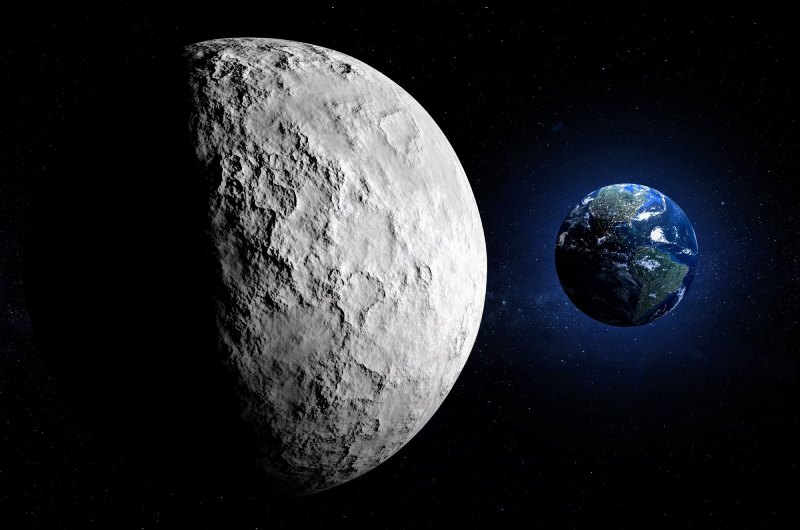As the sun set on a perfect Friday night, a momentous occasion in the history of lunar exploration took place near the Chinese island of Hainan. The Chang’e-6 lunar probe, named after a legendary Chinese moon goddess, set off on an unprecedented mission to study the moon’s less-traveled far side.
This program, which is a major component of China’s expansive lunar agenda, attempts to investigate and solve the mysteries of an area that is obscured from Earth’s perspective.
Cutting-edge research and global collaboration
Chang’e-6’s mission is a shining example of international cooperation in space research as well as China’s technological strength.
This mission, which is equipped with scientific equipment from the European Space Agency, France, Italy, and Pakistan and is also carrying a small satellite, highlights the spirit of international cooperation.
At the launch, the mission commander, Zhang Zuosheng, declared, “I declare this launch mission a complete success,” signifying a precise and planned entry into the lunar orbit.
The Far Side Mission’s Goals
The mission’s goals are both essential and fascinating. The far side of the moon provides ideal circumstances for radio astronomy and may provide light on the dark ages of the universe because it is insulated from Earth’s electromagnetic interference.
Scientists intend to gain an understanding of the compositional differences between the far side of the moon and its more recognizable counterpart by sending samples back from their drills into the lunar surface.
China’s Major Space Objectives and Moon Expeditions
A key component of China’s larger space policy is this project. China now has bigger goals in mind after making history in 2020 by returning lunar samples for the first time in almost 50 years.
Plans for the future include not only more lunar missions but also big projects like exploring Mars and achieving manned lunar landings by 2030.
At the same time, China keeps enhancing its domestic capabilities. The Tiangong space station, which circles the Earth, acts as a center for technology testing and scientific study.
Tiangong is run by China, unlike the International Space Station, from which China was barred owing to national security concerns raised by the United States. As the ISS draws closer to retirement, Tiangong may end up being the only space station in operation.
The International Space Exploration Stage
The successful launch of the rocket was witnessed by both scientists and onlookers, but there were international aspects to the occasion.
The debris that fell within the predicted zones was observed by the Philippine Space Agency, underscoring the difficulties and obligations faced by spacefaring countries.
This mission takes place in the midst of escalating international competition in space, especially between China and the United States, which intends to work with private companies like SpaceX and Blue Origin to send astronauts back to the moon by 2026.
Thinking Ahead To Lunar Missions and Beyond
China’s space exploration odyssey, which started with its first manned spaceflight in 2003, has swiftly made it a major player in the exploration of space.
China’s future plans include building a permanent outpost on the moon and possibly allowing foreign astronauts and tourists to visit its space station.
Every mission that succeeds raises the bar for our space accomplishments and sheds new light on the moon for the benefit of the world community.
China is deepening our common understanding of space and advancing its technological prowess through continuous explorations.
China’s space projects, particularly the ongoing Chang’e-6 mission, are ready to reveal new details about our nearest celestial neighbor, the moon, and are inviting the rest of the globe to join them on their celestial adventure. This expedition has the potential to reveal mysteries that have been hidden for millennia under the lunar shadow.
The Moon’s Far Side
Because of its permanent orientation away from our planet, the far side of the moon—often referred to as the “dark side”—remains a region cloaked in mystery, even though it receives just as much sunlight as the side facing Earth.
Due to a phenomenon known as tidal locking, which occurs when the moon’s rotational phase precisely matches its orbit around Earth, we are never able to see this side of the moon from Earth.
Terrain
With its distinctive dark volcanic maria, the far side’s topography differs significantly from that of the well-known near side. Rather, the terrain is more rugged, with fewer basaltic plains and a greater number of craters.
It is notable for housing the South Pole-Aitken basin, which is over 2,500 kilometers in circumference and 13 kilometers deep, one of the oldest and largest impact features in the solar system.
Composition
There may be a variation in the thickness of the moon’s crust between the near and far sides, as evidenced by the far side’s thicker crust and paucity of maria. This difference is large enough to suggest that it had an impact on the lack of maria and subsequent volcanic activity.
Exploration
With the Soviet Luna 3 spacecraft, which was the first to return photographs in 1959, scientific research of the far side got underway in earnest.
This less-explored half has since been the focus of multiple expeditions, leading up to the Chinese Chang’e 4 mission, which made history in 2019 by making the first soft landing on the far side.
This mission has been exploring the moon’s surface and subsurface with its rover Yutu-2, yielding crucial data that improves our understanding of the moon’s geology and past.


